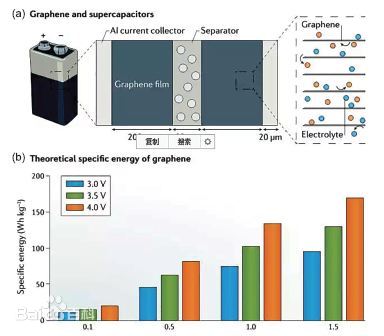-
Call Us
0086-592-7161550 -
Email us
ping@aotbattery.com -
Skype
ping@aotbattery.com
Call Us
0086-592-7161550Email us
ping@aotbattery.comSkype
ping@aotbattery.com
The advantages of graphene for direct lithium storage:
1)High specific capacity: Li-ion has non-stoichiometric ratio of intercalation and de-intercalation in graphene, and the specific capacity can reach 700~2000 mAh/g;
2)High charge-discharge rate: The interlayer distance of the multilayer graphene material is significantly larger than that of graphite
Most studies have also shown that the capacity of the graphene anode is about 540 mA h/g, but due to the decomposition of a large number of oxygen-containing groups on its surface during the charge and discharge process or the reaction with Li+, the battery capacity is attenuated.
Its rate performance is also greatly affected.

The defects caused by the doping of heteroatoms will change the surface morphology of the graphene anode material, thereby improving the wettability between the electrode and the electrolyte, and shortening the distance of electron transfer inside the electrode.
Improve the diffusion and transfer speed of Li+ in the electrode material, thereby improving the electrical conductivity and thermal stability of the electrode material.
However, there are still some disadvantages of graphene materials directly used as battery anodes, including:
1) The prepared single-layer graphene sheet is easy to stack, and the reduction of the specific surface area makes it lose part of the high lithium storage space;
2) The first coulombic efficiency is low, generally lower than 70%. Due to the large specific surface area and abundant functional groups, the electrolyte will decompose on the graphene surface during cycling to form an SEI film; at the same time, the residual oxygen-containing groups on the surface of the carbon material undergo irreversible side reactions with lithium ions, resulting in a further decrease in reversible capacity. ;
3) The initial capacity decays quickly;
4) Voltage platform and voltage hysteresis. Therefore, in order to solve this series of problems, the combination of graphene and other materials into graphene-based composite anode materials has become a hot spot in lithium battery research and a direction for the development of lithium battery anode materials.
For lithium battery anode materials, transition metal oxides or promising Si-based materials have been doped with graphene in electrochemical properties such as specific capacity, voltage characteristics, internal resistance, charge-discharge performance, cycle performance, and rate performance. excellent characteristics. The heteroatom doping in the graphene base introduces more surface defects, improves the electrical conductivity of the graphene material, and the composite material has better properties.

Tel/Whatsapp: 0086-592-7161550

Scan to wechat:
